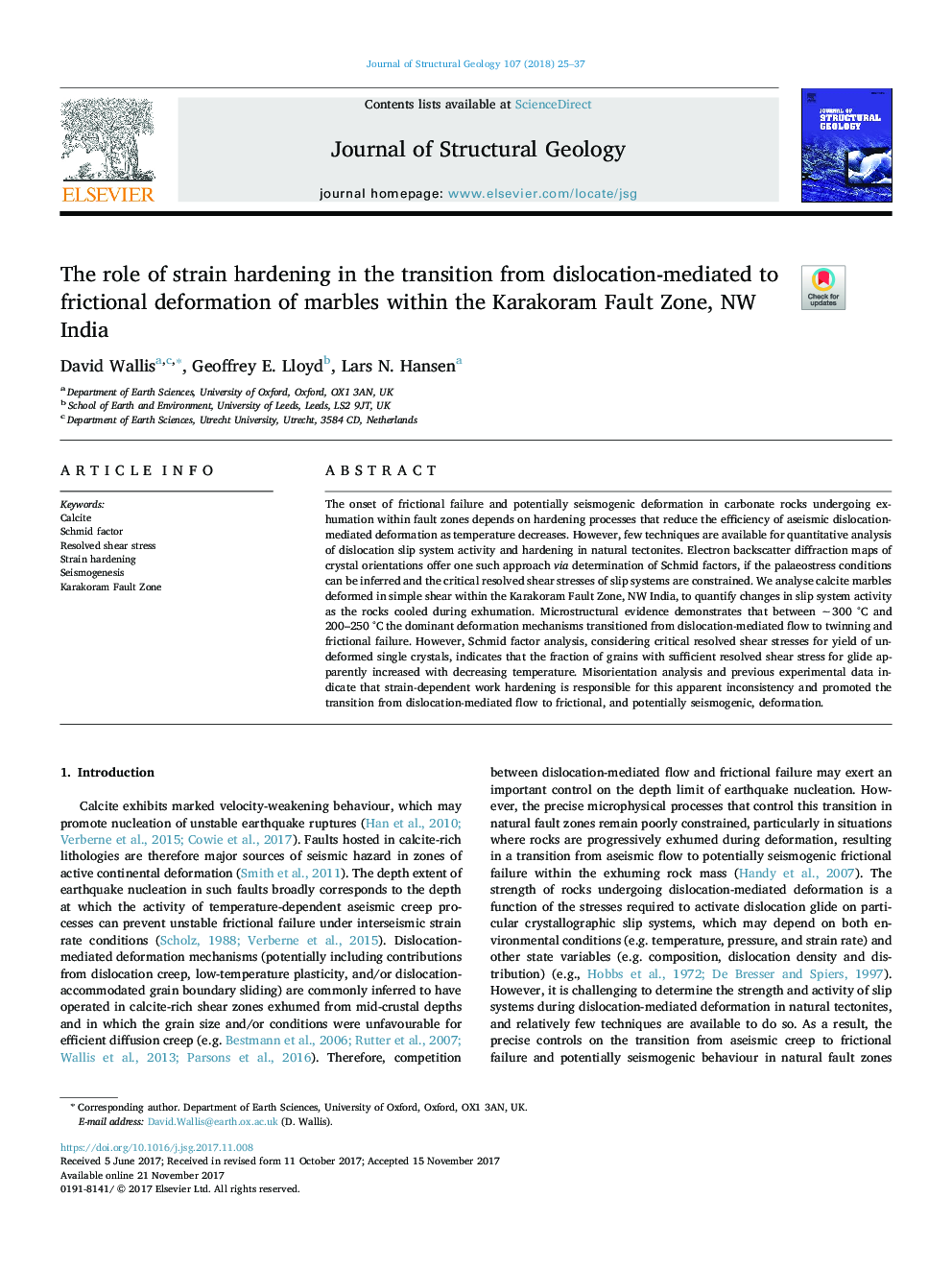| Article ID | Journal | Published Year | Pages | File Type |
|---|---|---|---|---|
| 8914510 | Journal of Structural Geology | 2018 | 13 Pages |
Abstract
The onset of frictional failure and potentially seismogenic deformation in carbonate rocks undergoing exhumation within fault zones depends on hardening processes that reduce the efficiency of aseismic dislocation-mediated deformation as temperature decreases. However, few techniques are available for quantitative analysis of dislocation slip system activity and hardening in natural tectonites. Electron backscatter diffraction maps of crystal orientations offer one such approach via determination of Schmid factors, if the palaeostress conditions can be inferred and the critical resolved shear stresses of slip systems are constrained. We analyse calcite marbles deformed in simple shear within the Karakoram Fault Zone, NW India, to quantify changes in slip system activity as the rocks cooled during exhumation. Microstructural evidence demonstrates that between â¼300 °C and 200-250 °C the dominant deformation mechanisms transitioned from dislocation-mediated flow to twinning and frictional failure. However, Schmid factor analysis, considering critical resolved shear stresses for yield of undeformed single crystals, indicates that the fraction of grains with sufficient resolved shear stress for glide apparently increased with decreasing temperature. Misorientation analysis and previous experimental data indicate that strain-dependent work hardening is responsible for this apparent inconsistency and promoted the transition from dislocation-mediated flow to frictional, and potentially seismogenic, deformation.
Related Topics
Physical Sciences and Engineering
Earth and Planetary Sciences
Geology
Authors
David Wallis, Geoffrey E. Lloyd, Lars N. Hansen,
